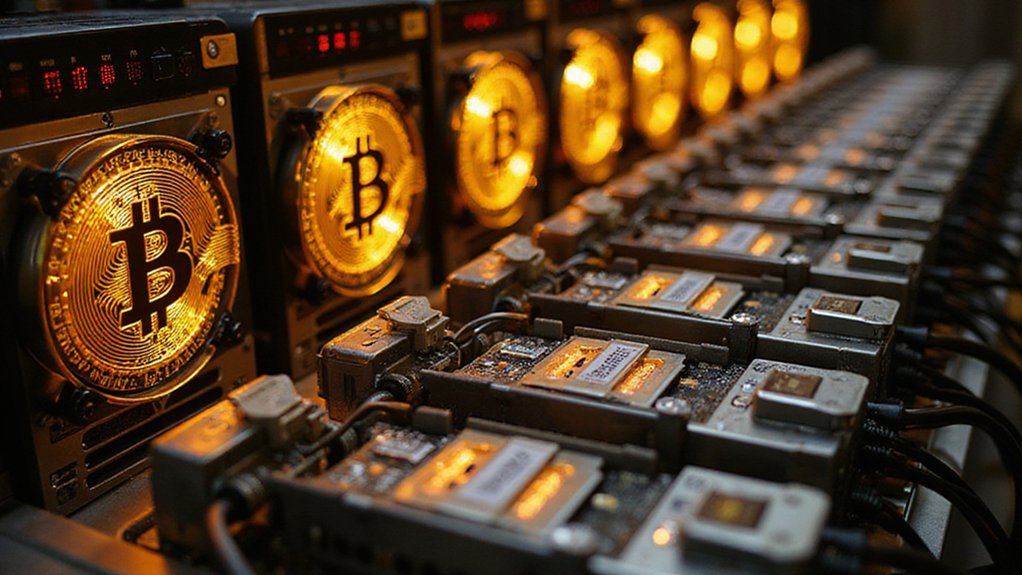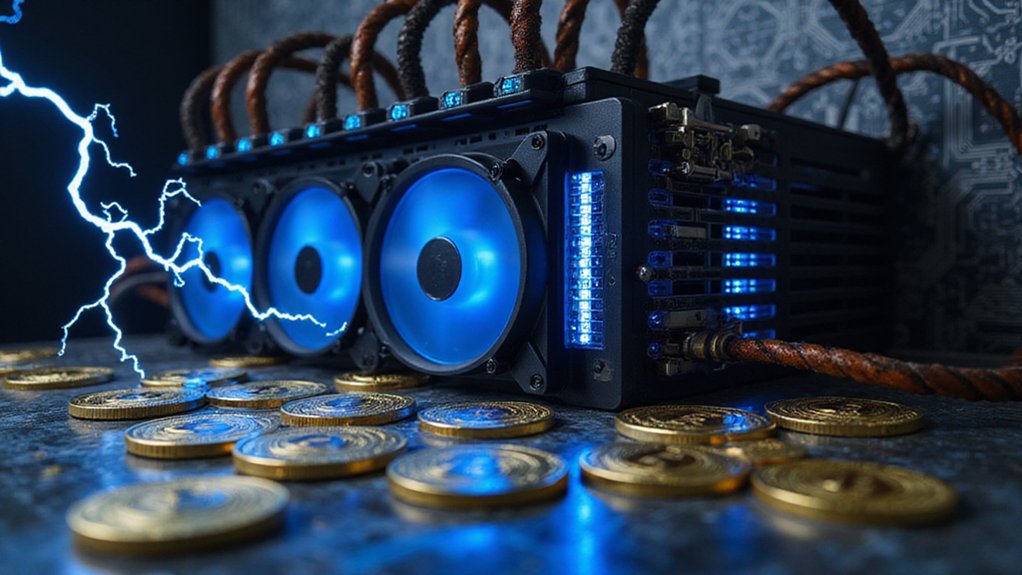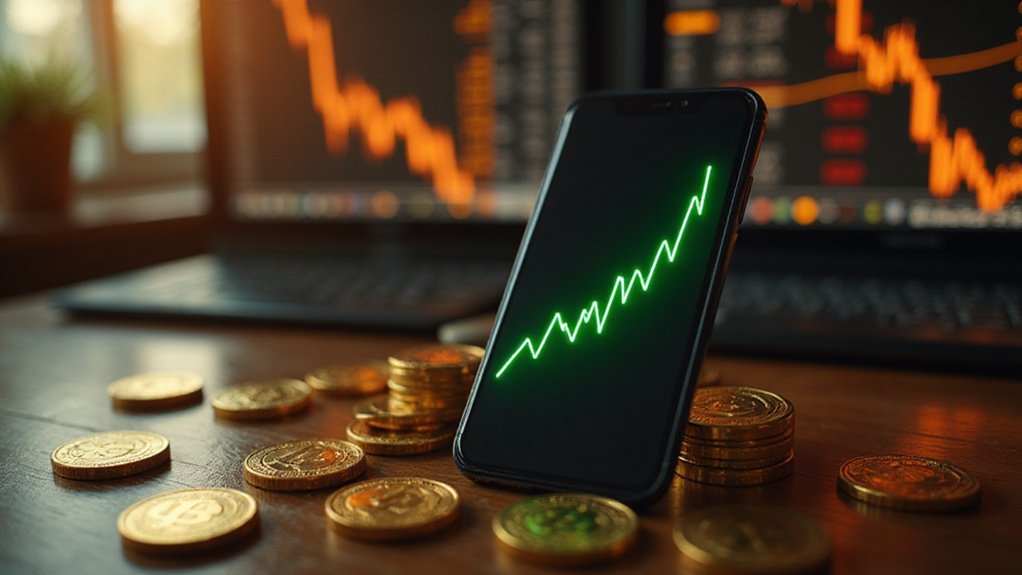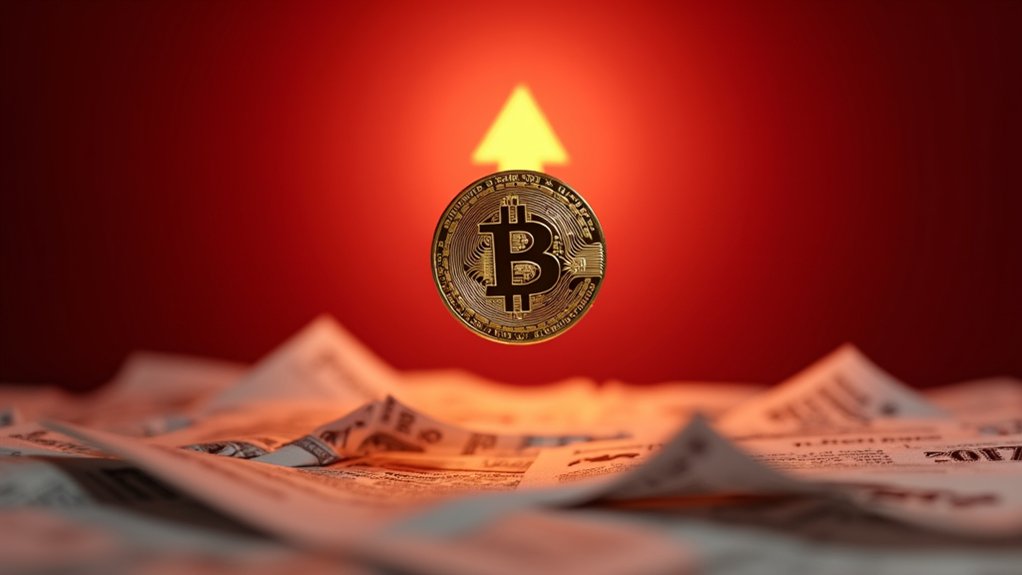Bitcoin mining operates as a distributed computational lottery where specialized ASIC machines compete to solve cryptographic puzzles, validating transactions while earning freshly minted bitcoins—currently worth over $100,000 each. Miners collect unconfirmed transactions, process them into blocks, and race to discover a hash below the network’s difficulty target. The winner broadcasts their solution, claims rewards (originally 50 BTC, now halved periodically), and the cycle repeats every ten minutes, securing this peculiar digital economy through sheer computational brute force and economic incentives that reveal mining’s intricate mechanics.

How does one transform electricity into digital gold? Through the curious alchemy of Bitcoin mining—a process that somehow convinced millions that burning kilowatts could birth currency.
Mining serves as Bitcoin’s distributed accounting department, where participants compete to validate transactions while earning freshly minted bitcoins and transaction fees as compensation.
The mechanics unfold with mathematical precision. Miners collect unconfirmed transactions from the mempool, prioritizing those offering higher fees (because generosity, even in decentralized systems, gets noticed).
In Bitcoin’s mempool marketplace, transaction fees become digital tips—because even algorithms appreciate those who pay for priority service.
These transactions undergo cryptographic processing, hashed repeatedly in pairs until producing a single Merkle root—essentially a digital fingerprint representing the entire transaction set within each block.
Here’s where things become delightfully absurd: miners must solve a cryptographic puzzle through pure computational brute force.
They guess numbers called nonces, hoping to generate a block hash falling below a network-determined target difficulty.
Think of it as an extraordinarily expensive lottery where tickets cost electricity and processing power rather than pocket change.
The Proof of Work algorithm guarantees this guessing game remains sufficiently challenging, adjusting difficulty approximately every two weeks to maintain Bitcoin’s sacred 10-minute average block time. This consensus mechanism effectively prevents double-spending by requiring significant computational effort to validate each transaction. Bitcoin’s Proof-of-Work represents just one approach among various consensus algorithms that enable distributed nodes to achieve agreement on network state.
The first miner discovering a valid hash broadcasts their victory to the network, claiming both the block reward and accumulated transaction fees.
Originally offering 50 BTC per block, mining rewards halve every 210,000 blocks (roughly four years), creating Bitcoin’s deflationary supply model.
With Bitcoin surpassing $100,000 in December 2024, these diminishing rewards still attract considerable attention—though one might question the environmental calculus involved.
Modern mining demands specialized ASIC hardware, designed exclusively for these computations.
Solo mining requires either extraordinary luck or deep pockets; most miners join pools, sharing computational resources and splitting rewards proportionally. Pool participants install mining software, configure worker credentials, and provide wallet addresses for payment distribution. The competition has reached such intensity that miners now generate trillions of hashes per second in their relentless pursuit of valid solutions.
This elaborate system secures Bitcoin’s network through economic incentives—participants protect the blockchain because they’re financially motivated to maintain its integrity.
Whether this represents technological brilliance or elaborate performance art remains a subject of considerable debate among observers watching electricity bills transform into digital assets.
Frequently Asked Questions
How Much Electricity Does Bitcoin Mining Consume Annually?
Bitcoin mining consumes approximately 170 terawatt-hours annually—roughly equivalent to Poland’s entire electricity demand.
Estimates range from 80 to 390 TWh, reflecting mining’s volatile nature as operators respond to price fluctuations and equipment availability.
This represents about 0.55% of global electricity consumption, with regional impacts reaching 2.3% in certain areas.
The energy intensity rivals major industrial sectors, underscoring the substantial environmental footprint of proof-of-work consensus mechanisms.
Can I Mine Bitcoin Profitably With a Regular Home Computer?
Mining Bitcoin profitably with a regular home computer represents a delightfully quixotic endeavor—one might achieve better returns collecting loose change from sidewalks.
Home computers lack the computational prowess of specialized ASICs, while electricity costs typically exceed any potential rewards by substantial margins.
Network difficulty has evolved beyond consumer hardware capabilities, rendering such attempts economically futile despite their romantic appeal to cryptocurrency enthusiasts.
What Happens When All 21 Million Bitcoins Are Mined?
When the final bitcoin emerges around 2140, miners will subsist entirely on transaction fees rather than block rewards—a rather optimistic assumption that users will pay enough to maintain network security.
The capped supply theoretically enhances scarcity value, though whether fee-based incentives can sustain the computational power securing this digital fortress remains an open question that Bitcoin’s architects conveniently deferred to future generations.
How Long Does It Take to Mine One Bitcoin?
Mining one Bitcoin’s duration depends entirely on computational power and methodology—solo miners with standard equipment might never succeed (a sobering reality), while industrial operations with massive ASIC farms could theoretically mine one every ten minutes if they dominated the network.
Pool participants typically earn fractions over months or years, making the question somewhat misleading.
The random nature of cryptographic puzzles means timing remains unpredictable, regardless of hardware investment.
Is Bitcoin Mining Legal in My Country?
Bitcoin mining legality varies dramatically by jurisdiction, creating a patchwork of regulations that miners must navigate carefully.
While most developed nations—including the United States, Canada, Australia, and numerous EU countries—permit mining operations under existing financial frameworks, some jurisdictions have imposed outright bans or moratoriums due to energy concerns.
Miners should consult local regulations, as legal status can shift rapidly based on environmental policies and governmental attitudes toward cryptocurrency.









